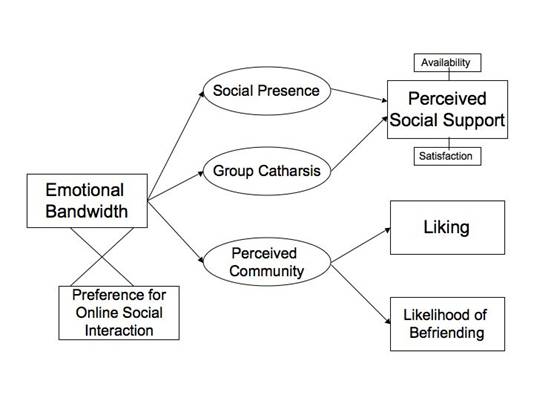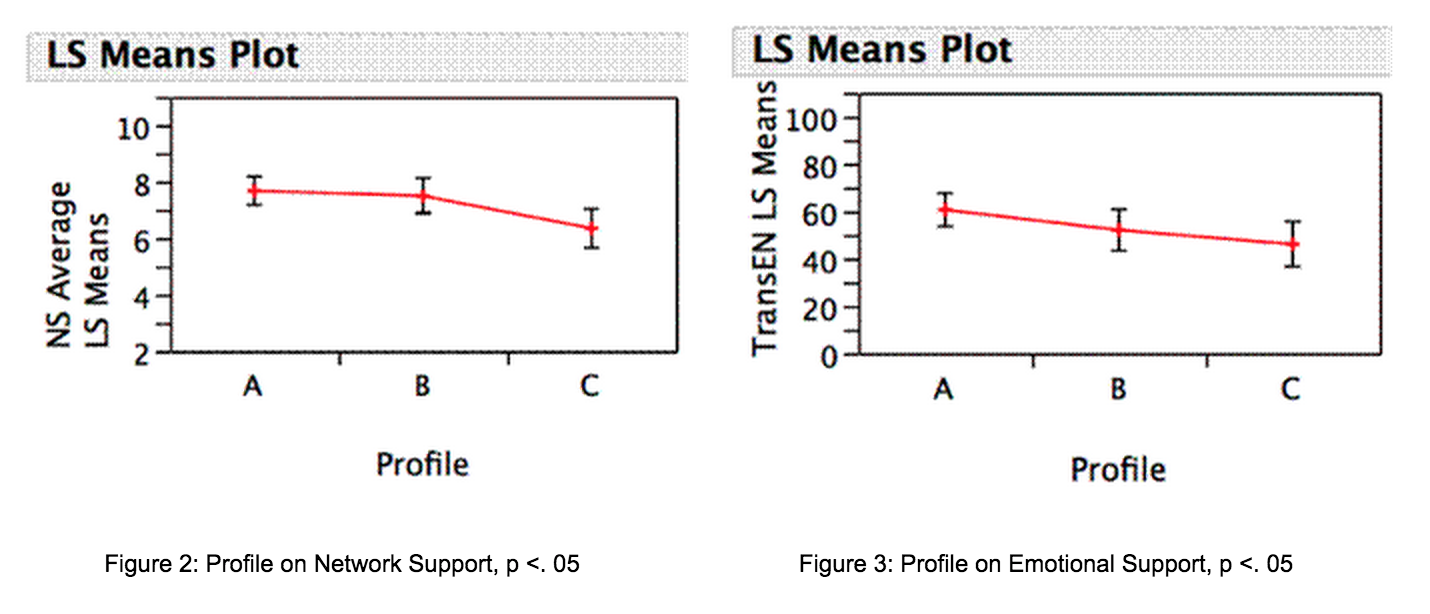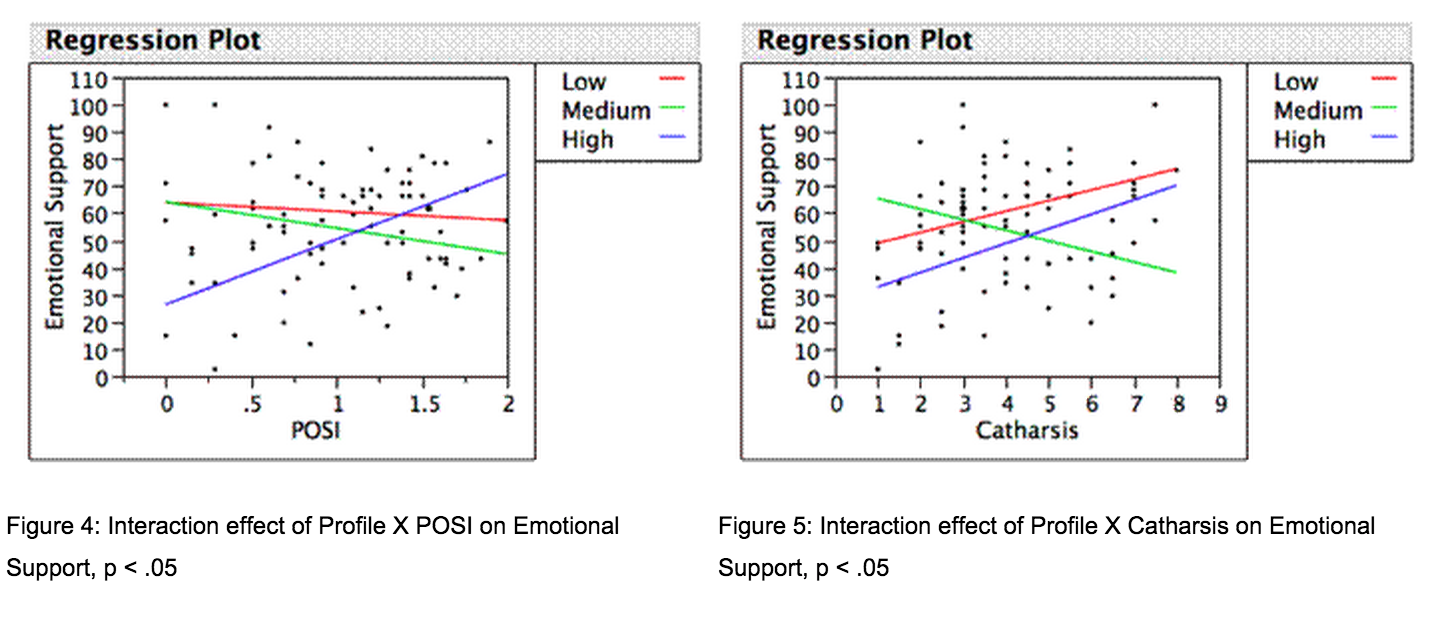Media Effects Research Lab - Research Archive
Misery doesn’t love company: An exploration of emotional bandwidth on online social networks
Student Researcher(s)
Saraswathi Bellur (Ph.D Candidate);
Andy High (Ph.D Candidate);
Anne Oeldorf-Hirsch (Ph.D Candidate);
Faculty Supervisor
FOR A COMPLETE REPORT OF THIS RESEARCH, SEE:
Saras Bellur, Anne Oeldorf-Hirsch & Andrew High (2008, May). Misery doesn’t love company: An exploration of emotional bandwidth on online social networks. Paper to be presented to the Communication and Technology Division of the International Communication Association (ICA) at the 58th conference in Montreal, Canada.
INTRODUCTION
With the popularity and growth of online social networks such as Facebook, it becomes imperative to understand how users of these sites are employing them and whether these sites are appropriate venues to gain social support. Compared to other online social networks, such as MySpace or Friendster, Facebook allows users to post more information in a wider variety of formats: through profile pictures, personal albums, videos, and status updates.This affords users the ability to vary the amount of "emotional bandwidth" of their presence, thereby increasing the potential for strategic self-presentation. Because computer-mediated communication (CMC) is becoming increasingly more attractive for expressing oneself this way, these types of sites might provide a satisfactory level of social support and interpersonal connection. We argue that enhanced emotional bandwidth will trigger several mediating processes such as a heightened sense of social presence, perceived community, and group catharsis, all of which will ultimately affect the outcomes of perceived social support and liking.

Figure 1. Proposed model
HYPOTHESES AND RESEARCH QUESTIONS
H1a: Higher emotional bandwidth will lead to higher perceived availability of social support
H1b: Social presence should mediate the relationship between emotional bandwidth and social support
H1c: Group Catharsis should mediate the relationship between emotional bandwidth and social support
H2a: Higher emotional bandwidth will lead to higher perceptions of support satisfaction
H2b: Social presence should mediate the relationship between emotional bandwidth and support satisfaction
H2c: Group Catharsis should mediate the relationship between emotional bandwidth and support satisfaction
H3: Gender serves as a moderator in the relationship between emotional bandwidth and perceived social support such that females should report higher perceptions of social support than will men for profiles with a high emotional bandwidth.
H4: Gender serves as a moderator in the relationship between emotional bandwidth and liking such that females will report higher levels of liking than will men for profiles high in emotional bandwidth.
H5a: Higher emotional bandwidth leads to greater liking.
H5b: Perceived community should mediate the relationship between emotional bandwidth and liking.
H6a: Higher emotional bandwidth leads to greater chance of befriending.
H6b: Perceived community should mediate the relationship between emotional bandwidth and befriending.
RQ1: Does preference for online social interaction (POSI) moderate the relationship between emotional bandwidth and social support?
RQ2: Does preference for online social interaction (POSI) moderate the relationship between emotional bandwidth and liking?
METHOD
Using the Facebook site and Photoshop, three fictitious Facebook profiles were created with varying levels of emotional bandwidth by manipulating the status features on Facebook. In the profile was a young woman who had recently ended her relationship and made her negative feelings very clear on her profile. In addition, she was provided messages of support from her friends. Participants (N=84) rated one of these profiles to which they were randomly assigned on perceived network support, emotional network support, perceived support satisfaction, and liking of the profile person.
RESULTS
Results show that participants preferred Profile A, the profile with lowest bandwidth, were most likely to befriend the person in this profile, and rated it highest on perceived network support (Figure 2) and emotional network support (Figure 3), which is contrary to our hypotheses.


Social presence, perceived community, and befriending had significant effects on the three support variables, but did not mediate the relationship between emotional bandwidth and these dependent variables. Preference for online social interaction and perceived catharsis were significant moderators of the support variables (Figures 4-5).
CONCLUSIONS
According to this study, social support is most likely to be perceived and thought to be appropriate on profiles with low amounts of emotional bandwidth, suggesting that intensity of emotional bandwidth is not equal to quality and that CMC features should be used judiciously. There may also be a processing bias such that the presence of more CMC features led to less attention to support messages. In conclusion, the type of interface Facebook provides, with its loose-knit networks and asynchronous communication, may not be the proper one for the provision of social support. Similarly, people should not expect to make friends on online social networks if they selectively present themselves in a negative light.
For more details regarding the study contact
Dr. S. Shyam Sundar by e-mail at sss12@psu.edu or by telephone at (814) 865-2173

